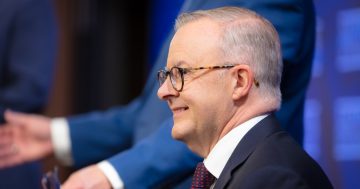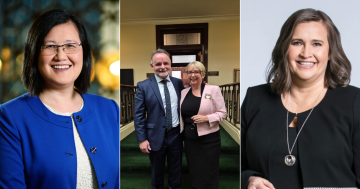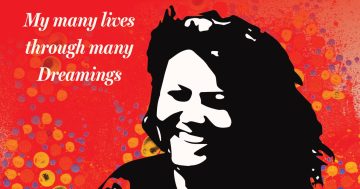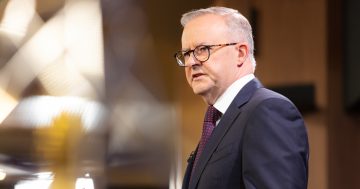Yvonne Wenger* says the neurodiversity movement is encouraging employers to see the skills and abilities of people with neurological differences.

Photo: SolStock
Hiring someone with autism to help her with administrative tasks left Erica Wight stressed about the way that decision could ultimately make more work for her.
Three or four months after she brought the new employee on board, Wight said, she stopped back-checking his work — it was flawless.
The worker might not have had the typical social interactions of other colleagues in the office, but besides being accurate, he was always focused, and his insatiable curiosity left him the “king of small talk,” Wight told 100 HR professionals at a recent Kennedy Krieger Institute workshop.
Their session discussed altering hiring practices to find “neuro-diverse” job candidates, or those with attention deficit hyperactivity disorder or dyslexia, or on the autism spectrum.
“We have another minority group here, and they are finished being judged only by their shortcomings,” said Wight, a HR manager for the US National Institutes of Health (NIH).
“They’re ready to show the world what they can do.”
“This is the neurodiversity movement.”
“This is the next huge wave.”
“This is a civil rights movement and this wave is happening now.”
The movement attempts to address historically low unemployment rates by encouraging employers to see the skills and abilities of people with neurological differences, such as advanced technical ability, a capacity to understand and dissect complex patterns, and tremendous problem-solving stamina.
The term “neurodiversity” is intended to emphasise difference in functioning as normal and natural variations in the human condition.
Wight said some counts put at 15 per cent the proportion of the population with neurodiversity, a category of people with typically high unemployment.
Autism Speaks, a US advocacy nonprofit, estimates that unemployment and underemployment are as high as 90 per cent for people with autism-spectrum disorder.
The workshop drew human resources workers from Government Agencies, nonprofits and for-profit companies.
It highlighted ways for employers to find a wider pool of job candidates and the competitive advantages to doing so, and featured a panel of employees with various cognitive abilities and their employers.
The panel was moderated by Ami Taubenfeld, who runs Itineris, a nonprofit that provides customised work development for people with autism.
Itineris is among a growing number of organisations that are pushing for workplace inclusion for people with developmental disabilities in sectors from health care to retail.
Ricky Day is a person with neurodiversity who was highlighted as being employed for the past eight years at an NIH clinical centre.
An office automation clerk, Day conducts many tasks in a day’s work, from auditing hotel and taxi vouchers submitted by patients to putting in work orders for burned-out light bulbs.
But his smile and gregarious personality are what he is most known for.
“I am told every person in the building knows Ricky,” Taubenfeld said.
“Yeah, they do,” Day said, drawing laughter from the group.
Daniel Durgin, Assistant Vice President of HR for Kennedy Krieger, said the goal of the workshop was to break down how interviewing techniques and other hiring practices can keep people out of the workforce.
To start, he said, employers can reflect internally on their own systems to see whether they are inclusive or if they’re screening people out.
Then, they can set objectives to become more inclusive.
Employers can go directly to groups such as Itineris that maintain pools of candidates to find the fit they need for a specific job, bypassing advertising and screening and interviews, Durgin said.
“We believe there is an opportunity for employers that will ultimately help these individuals gain meaningful work — and that’s the key, that it’s meaningful and competitive work,” Durgin said.
Surprising to employers, he said, could be how diligent, dedicated and reliable neuro-diverse workers can be.
Dave Hickey, President of BD Diagnostic Systems, said hiring people with neurodiversity is a means to advance the company’s competitive advantages.
“We compete globally in a rapidly evolving, highly competitive healthcare market,” Hickey said, “and we look for ways to achieve our goal of advancing the world of health.”
For Wight, who gave the workshop’s keynote address, the movement is also personal.
Her eight-year-old daughter, Sydney, was diagnosed with inattentive attention deficit hyperactivity disorder.
She is a third-grader who reads at an eighth-grade level.
Her mother said Sydney’s verbal comprehension tests in the genius range and her ability to block out distractions allows her to never give up when she sets her mind on solving a problem.
But to many in the world, Wight said, what they sometimes see first is a chronic daydreamer who moves slowly and deliberately through the world.
“Sydney was born and remains perfect,” Wight said.
“Not perfect in the homecoming-queen or captain-of-the-soccer-team way.”
“Perfect in the cosmic sense, in that she was born exactly as she should be: massively creative, insightful, thoughtful and kind, musical and insanely smart.”
“Sydney’s biggest problem is not her disability.”
“Her biggest struggle is that she is neurologically outnumbered.”
“She is functioning in a world where being normal is prized above all else, a culture where we will not accept her differences as just a natural, okay way to be in this world.”
Wight is left to wonder: when it comes time for her daughter to enter the workforce, will she make it past the interview stage of the hiring process?
* Yvonne Wenger is poverty and social services reporter for the Baltimore Sun. She tweets at @yvonnewenger.
This article first appeared at www.baltimoresun.com.











